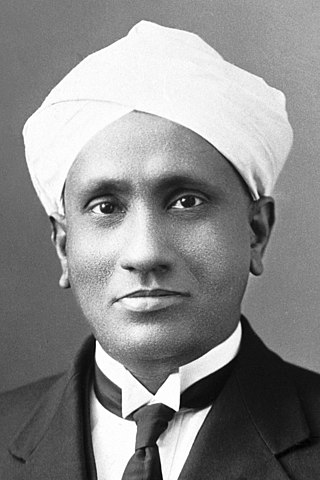
Sir Chandrasekhara Venkata Raman was an Indian physicist known for his work in the field of light scattering. Using a spectrograph that he developed, he and his student K. S. Krishnan discovered that when light traverses a transparent material, the deflected light changes its wavelength and frequency. This phenomenon, a hitherto unknown type of scattering of light, which they called "modified scattering" was subsequently termed the Raman effect or Raman scattering. Raman received the 1930 Nobel Prize in Physics for the discovery and was the first Asian to receive a Nobel Prize in any branch of science.
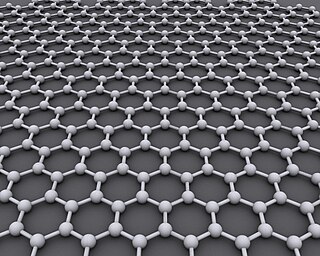
Graphene is an allotrope of carbon consisting of a single layer of atoms arranged in a hexagonal lattice nanostructure. The name is derived from "graphite" and the suffix -ene, reflecting the fact that the graphite allotrope of carbon contains numerous double bonds.
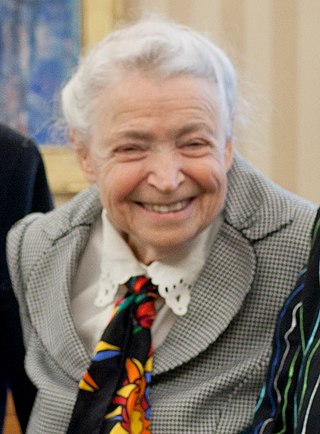
Mildred Dresselhaus, known as the "Queen of Carbon Science", was an American physicist, materials scientist, and nanotechnologist. She was an institute professor and professor of both physics and electrical engineering at the Massachusetts Institute of Technology. She also served as the president of the American Physical Society, the chair of the American Association for the Advancement of Science, as well as the director of science in the US Department of Energy under the Bill Clinton Government. Dresselhaus won numerous awards including the Presidential Medal of Freedom, the National Medal of Science, the Enrico Fermi Award, the Kavli Prize and the Vannevar Bush Award.
Phaedon Avouris is a Greek chemical physicist and materials scientist. He is an IBM Fellow and was formerly the group leader for Nanometer Scale Science and Technology at the Thomas J. Watson Research Center in Yorktown Heights, New York.
Rappal Sangameswaran Krishnan was an Indian experimental physicist and scientist. He was the Head of the department of Physics at the Indian Institute of Science and the vice chancellor of the University of Kerala. He is known for his pioneering researches on colloid optics and a discovery which is now known as Krishnan Effect. He was a Fellow of the Indian Academy of Sciences, Indian National Science Academy and the Institute of Physics, London and a recipient of the C. V. Raman Prize. 25 students were guided by RSKrishnan for Ph D. Dr T N Vasudevan was the 25th. Prof Vasudevan retired from Physics Dept, Calicut University died on 2 August 2021
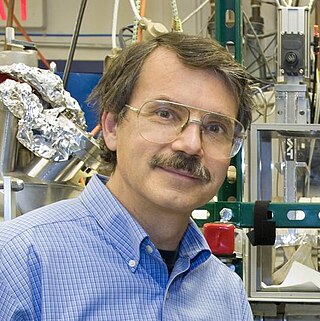
Alex K. Zettl is an American experimental physicist, educator, and inventor.

Thalappil Pradeep is an institute professor and professor of chemistry in the Department of Chemistry at the Indian Institute of Technology Madras. He is also the Deepak Parekh Chair Professor. In 2020 he received the Padma Shri award for his distinguished work in the field of Science and Technology. He has received the Nikkei Asia Prize (2020), The World Academy of Sciences (TWAS) prize (2018), and the Shanti Swarup Bhatnagar Prize for Science and Technology in 2008 by Council of Scientific and Industrial Research.
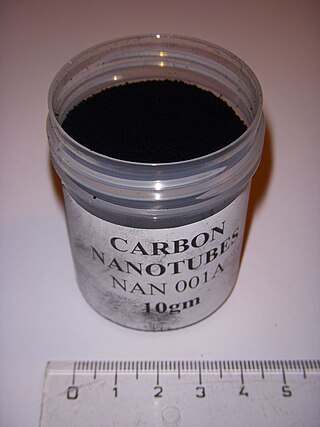
The optical properties of carbon nanotubes are highly relevant for materials science. The way those materials interact with electromagnetic radiation is unique in many respects, as evidenced by their peculiar absorption, photoluminescence (fluorescence), and Raman spectra.
The transport of heat in solids involves both electrons and vibrations of the atoms (phonons). When the solid is perfectly ordered over hundreds of thousands of atoms, this transport obeys established physics. However, when the size of the ordered regions decreases new physics can arise, thermal transport in nanostructures. In some cases heat transport is more effective, in others it is not.
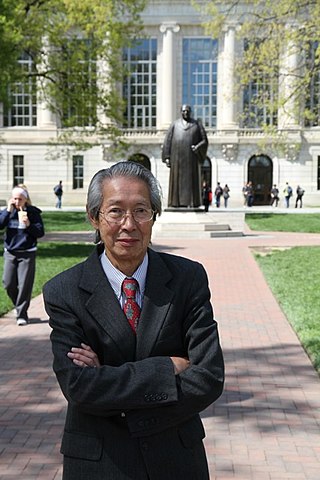
Raphael Tsu is a Fellow of the American Physical Society and is Professor Emeritus of electrical engineering at the University of North Carolina at Charlotte, Charlotte, NC.
Dipankar Das Sarma, popularly known as D.D. Sarma, is an Indian scientist and structural chemist, known for his researches in the fields of Solid State Chemistry, Spectroscopy, Condensed Matter Physics, Materials Science, and Nanoscience. He is a former MLS Chair Professor of Physics and Chairman of the Centre for Advanced Materials and the GAST Professor of Uppsala University, Sweden, A recipient of TWAS Physics Prize and the UNESCO Biennial Javed Husain Prize, Sarma was honored by the Council for Scientific and Industrial Research (CSIR), Government of India, in 1994, with the Shanti Swarup Bhatnagar Prize for Science and Technology.
Apparao M Rao is the Robert A. Bowen Endowed Professor of Physics in the department of physics and astronomy, the founding director of the Clemson Nanomaterials Institute, and a former associate dean for discovery in the college of science at Clemson University. His research in nanoscience and nanotechnology has been cited over 54,600 times in open literature and his h-index is 98. He is a Fellow of the American Physical Society, the American Association for the Advancement of Science, the National Academy of Inventors, and the Materials Research Society. In 2012, he received the Alumni Award for Outstanding Achievements in Research, and has served on the Advisory Panel for the Dean and the Vice-President of Research, Clemson University. His research and development efforts led to the establishment of Clemson Nanomaterials Institute, which supports sustainable research and development capacity and competitiveness in the U.S. and the State of South Carolina. The State of South Carolina conferred on him its highest honor - the 2014 Governor’s award for excellence in scientific research.
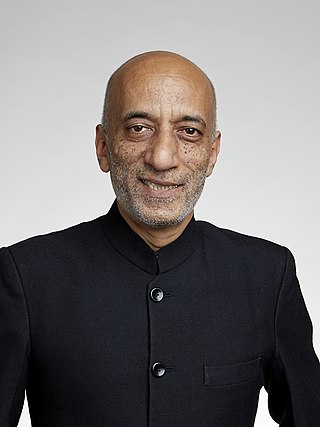
Sriram Rajagopal Ramaswamy is an Indian physicist. He is a professor at the Indian Institute of Science, Bangalore, and previously the director of the Tata Institute of Fundamental Research (TIFR) Centre for Interdisciplinary Sciences in Hyderabad.
Krityunjai Prasad Sinha was an Indian theoretical physicist and an emeritus professor at the Indian Institute of Science. Known for his research in solid-state physics and cosmology, Sinha was elected a fellow of all the three major Indian science academies – the Indian National Science Academy, the Indian Academy of Sciences, and the National Academy of Sciences, India. In 1974, the Council of Scientific and Industrial Research, the apex agency of the Government of India for scientific research, awarded him the Shanti Swarup Bhatnagar Prize for Science and Technology, one of the highest honors in Indian science, in recognition of his contributions to the field of physical sciences.
Jean-Pierre Leburton is the Gregory E. Stillman Professor of Electrical and Computer Engineering and professor of Physics at the University of Illinois at Urbana–Champaign. He is also a full-time faculty member in the Nanoelectronics and Nanomaterials group of the Beckman Institute for Advanced Science and Technology. He is known for his work on semiconductor theory and simulation, and on nanoscale quantum devices including quantum wires, quantum dots, and quantum wells. He studies and develops nanoscale materials with potential electronic and biological applications.
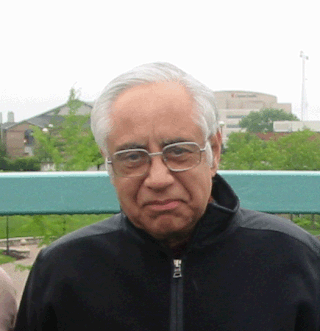
Anil Kumar is an Indian experimental physicist known for his work in the field of nuclear magnetic resonance spectroscopy. He is a professor at the Indian Institute of Science in Bangalore.

David Tománek (born July 1954) is a U.S.-Swiss physicist of Czech origin and researcher in nanoscience and nanotechnology. He is Emeritus Professor of Physics at Michigan State University. He is known for predicting the structure and calculating properties of surfaces, atomic clusters including the C60 buckminsterfullerene, nanotubes, nanowires and nanohelices, graphene, and two-dimensional materials including phosphorene.
Aron Pinczuk was an Argentine-American experimental condensed matter physicist who was professor of physics and professor of applied physics at Columbia University. He was known for his work on correlated electronic states in two dimensional systems using photoluminescence and resonant inelastic light scattering methods. He was a fellow of the American Physical Society, the American Association for the Advancement of Science and the American Academy of Arts and Sciences.
Irving Philip Herman is an American physicist and the Edwin Howard Armstrong Professor of Applied Physics at Columbia University. He is an elected Fellow of the American Physical Society and of Optica, the former for "distinguished accomplishments in laser physics, notably the development and application of laser techniques to probe and control materials processing".
Gene Frederick Dresselhaus was an American condensed matter physicist. He is known as a pioneer of spintronics and for his 1955 discovery of the eponymous Dresselhaus effect.










